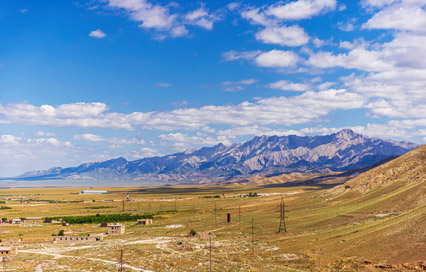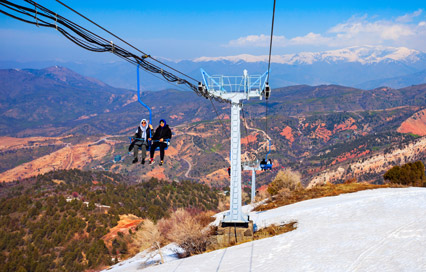Currency in Uzbekistan - Must-Read Guideline Before You Travel to Uzbekistan
December 17, 2024
For travelers heading to Uzbekistan, understanding and getting familiar with the local currency is key to making the most of your visit. As a visitor or someone considering doing business in this Central Asian country, understanding its currency system is crucial for smooth transactions and a better experience.
In this article, we will delve into everything you need to know about the currency in Uzbekistan, including its history, current usage, exchange process, banking, and tips for handling money while visiting.
An Overview of Currency in Uzbekistan
The national currency of Uzbekistan is the Uzbekistani Som, abbreviated as UZS. The word "som" translates to "pure" in several Turkic languages, and it has historical roots from the Soviet era when the Uzbekistan Som was used as a term for the ruble in some parts of Central Asia. The UZS has been the official currency since 1994, following Uzbekistan’s independence from the Soviet Union.
The Uzbekistani Som is subdivided into 100 tiyin, though the tiyin coins are rarely used today due to inflation. Banknotes are the most commonly used form of currency, ranging in denominations from 1,000 to 200,000 som. Coins, although minted, are not in frequent circulation.

The national currency of Uzbekistan is Som
A Brief History of Uzbekistan’s Currency
Before the introduction of the Uzbekistani Som, Uzbekistan used the Soviet ruble, even after gaining independence in 1991. In 1993, the transitional "Som coupon" was introduced to replace the ruble, but inflation and economic instability made it necessary to adopt a new currency. Thus, in 1994, the Uzbekistani Som became the country’s official currency.
Since its introduction, the Uzbekistan money currency has faced periods of significant devaluation due to high inflation rates. However, in recent years, economic reforms have stabilized the Som, and the government has been actively working on policies to make it more competitive on the global stage.
Value of Uzbekistan Currency
Currently, the most commonly used denominations of Uzbekistani Som banknotes are 1,000, 5,000, 10,000, 50,000, 100,000, and 200,000 som. Due to the country’s inflation history, small denominations like 1 som and 5 som are virtually nonexistent in everyday transactions.
The banknotes vary in color and design, often showcasing significant national symbols, landmarks, and historical figures. Amir Timur and Al-Khwarizmi, two well-known historical Uzbeks, are shown on the banknotes. Because banknotes and coins are always changing in terms of design, there may be subtle variations in their overall appearance over time.
Coins are also minted but are rarely used. These range from 1 to 500 Som, however, it is quite rare to see these coins in daily transactions, with most people relying on larger denominations in banknotes.

Banknotes of currency in Uzbekistan
Currency Exchange Uzbekistan
The Uzbekistani Som has been subject to considerable fluctuations in value, particularly during the early years of its introduction. While the som is relatively stable today, it is still affected by global economic changes. The exchange rate is variable, so it’s essential to check the current rates before traveling or making financial decisions.
Foreign currencies, particularly U.S. dollars, are widely accepted in Uzbekistan, especially in tourist areas, but it’s advisable to carry local currency for smaller purchases. U.S. dollars and euros are the most easily exchanged currencies in the country.
For example, here are some national currencies exchange to currency in Uzbekistan:
- United States of America: 1 USD = 12,772.7 UZS
- European Union: 1 EUR = 14,142.9 UZS
- United Kingdom: 1 GBP = 16,968.2 UZS
- Canada: 1 CAD = 9,483.2 UZS
- Australia: 1 AUD = 8,835.41 UZS
- Japan: 1 JPY = 88.8075 UZS
- India: 1 INR = 152.258 UZS
- Myanmar: 1 MYR = 3,069.63 UZS

You can exchange money for Uzbekistan Som at banks
Currency exchange can be done at official exchange offices, hotels, and banks. It's worth noting that exchanging money with street vendors is illegal and can result in fines or worse. To avoid any issues, always use official exchange services.
When exchanging currency, it is recommended to bring clean, crisp bills, as some exchange offices might refuse damaged or marked banknotes. U.S. dollars tend to offer the best exchange rates, but euros are also widely accepted.
In the event that you are exchange currency in Uzbekistan by bank:
- Bring your passport with you.
- Verify that your money is clean and sharp.
- The bank is open Monday through Saturday from 9 to 18.
- You cannot exchange money at the border, but you may at the airport.
- These days, banks convert foreign currency into sum and vice versa.
Mobile Payments and Banking
Uzbekistan is rapidly modernizing its banking system, and mobile banking and payment options are starting to gain popularity. Apps such as Click and Payme allow users to transfer money, pay bills, and make purchases online using their smartphones. These apps are especially popular with younger Uzbeks and those living in urban areas.
However, for tourists, these mobile payment systems might not be as accessible unless they have a local bank account. Cash remains king for most travelers in Uzbekistan, especially when visiting rural areas or smaller establishments that may not accept cards or mobile payments.

Prepare some cash before traveling to Uzbekistan
Tips for Handling Currency in Uzbekistan
- Carry Cash: While larger cities accept cards, most transactions in Uzbekistan are still made in cash. Make sure to carry enough local currency for small purchases, transport, and tipping.
- Use Official Exchange Offices: Always exchange your money at official banks or exchange offices to avoid scams and penalties for illegal money changing.
- Smaller Denominations for Day-to-Day Use: Keep smaller denominations of Som on hand for daily transactions, as some vendors may not have enough change for larger notes.
- Be Cautious with Damaged Banknotes: Exchange offices and some vendors may refuse to accept damaged or old banknotes, so always carry clean, unmarked bills when exchanging foreign currency.
- ATMs May Have Withdrawal Limits: Be aware that ATMs in Uzbekistan may have lower withdrawal limits than what you are used to, and it is worth checking in advance whether your bank charges foreign transaction fees.
- Plan for Rural Travel: If you plan to travel outside the main cities, ensure you have enough cash, as finding ATMs and credit card facilities can be challenging in rural areas.
FAQs about Currency in Uzbekistan
1. What is the currency in Uzbekistan that I should use?
The official currency of Uzbekistan is the Uzbekistani Som, abbreviated as UZS, symbol is лв.
2. Can I use foreign currency in Uzbekistan?
While U.S. dollars and euros are accepted at some hotels, tourist areas, and larger businesses, most transactions are conducted in Uzbekistani Som. However, you should carry local currency for small purchases and daily expenses.
3. Are credit cards widely accepted in Uzbekistan?
Credit cards, particularly Visa and MasterCard, are increasingly accepted in major cities like Tashkent and Samarkand. However, in smaller towns and rural areas, cash is preferred.
4. Are there any mobile payment options in Uzbekistan?
Mobile payment apps like Click and Payme are popular among locals, but they may not be accessible to tourists unless they have a local bank account. Cash remains the easiest option for most travelers.
5. Should I tip in Uzbekistan?
Tipping is not a common practice in Uzbekistan, though rounding up the bill or leaving small tips at restaurants is appreciated. It’s always helpful to carry smaller denominations of Som for tipping if needed.
Conclusion
Understanding the currency in Uzbekistan is essential for anyone planning to visit, invest, or do business in this beautiful country. The Uzbekistani Som may not be the most internationally recognized currency, but it plays a vital role in the country’s economy.
From understanding exchange rates to knowing where and how to use your money, being prepared will ensure a smooth and enjoyable experience during your stay in Uzbekistan. Always keep cash on hand, exchange money legally, and be aware of the local banking systems to make the most of your time in this fascinating Central Asian nation.
Related Articles:
- Cities To Visit In Uzbekistan: Exploring The Best Destinations
- The Ultimate Uzbekistan Travel Guide: What Travelers Need To Know
- Travel Guide To Tashkent: The Capital Of Uzbekistan
- Travel Advisory Uzbekistan: Guide For Safe And Enjoyable Travel
- Uzbekistan Solo Female Travel: A Comprehensive Guide To Safe Adventures
- Where Is Uzbekistan: Travel Guide To Central Asia's Hidden Gem
Tags




